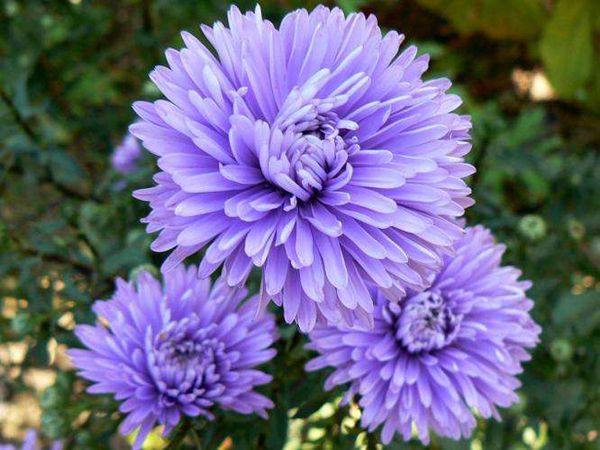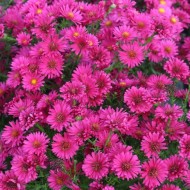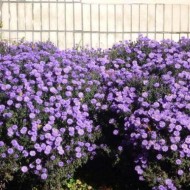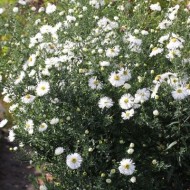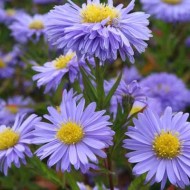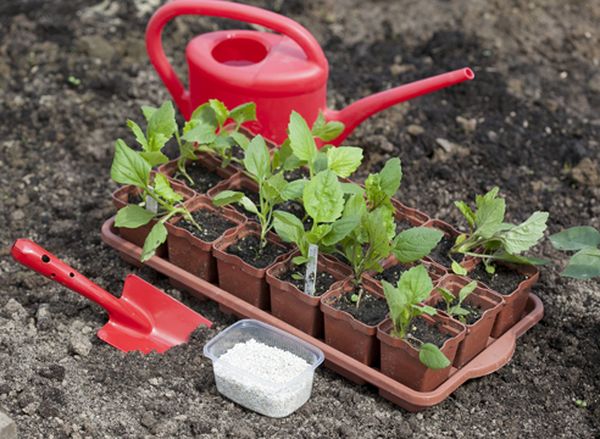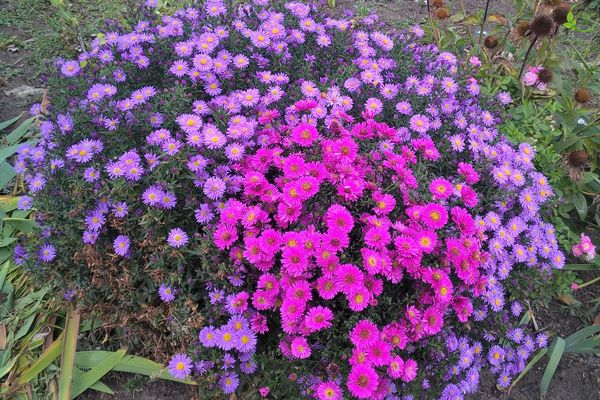How to grow New Belgian aster and use it in garden design
Content
Variety of species
There are more than a thousand types of asters, a third of which are actively used for planting in summer cottages. Particular attention should be paid to such a variety as the New Belgian aster. Its second name is Virginia aster. The main characteristics of the plant:
- does not need to be planted every year - it is a perennial plant;
- the height of the bush is usually in the range of 60–140 cm;
- the stems are thin and closely spaced;
- leaves are glossy, dark green, elongated, up to 12 cm in length;
- flowers are located along the entire length of the branches, have a diameter of 2-4 cm;
- flowers are lilac, pink or white;
- the number of flowers can reach 200, depending on the age of the plant;
- flowering can occur from July to September, the aster variety plays an important role;
- the plant is resistant to frost down to -5 ° C.
The most famous types of New Belgian asters:
- Marie Ballard. The height of the bush reaches 90 cm, has straight stems, flowering occurs in autumn, lasts up to one and a half months. The flowers are usually white and yellow, their diameter is in the range of 5-8 cm.
- Sunset. The height of the bush reaches 120 cm, the stems branch. The plant blooms in early autumn. Flowering lasts 1.5–2 months. The flowers usually have a yellow center and a pale purple border with an admixture of pink. The name is directly related to such a color, reminiscent of a sunset.
- White ladies. Plant height - about 100 cm, flowers have a yellow center and white petals, their diameter reaches 2–3 cm. This variety is the most resistant to frost, begins to bloom from September until frost.
- Oktoberfest. Plant height reaches 100 cm, a spreading bush is formed, flowering lasts about a month. The flowers are semi-double, have a blue color and reach up to 4 cm in diameter.
- Amethyst. The bush has a height of up to 120 cm, the branches are located close to each other, flowering lasts from August until the onset of cold weather. The leaves reach a length of 12 cm, the flowers are bright - purple with a yellow center, up to 3.5 cm in diameter.
Video "How to propagate and transplant the New Belgian aster"
In this video, you will learn how to properly propagate and transplant the New Belgian aster.
Flower bed decoration
New Belgian aster species are good for decorating your site, grow quickly and take the shape of a ball.
Most often, asters are used:
- in hedges;
- when forming green sculptures;
- when arranging an alpine slide;
- when drawing up a drawing on a flower bed;
- for planting in pots and pots;
- when drawing up bouquets.
Asters attract gardeners with their bright and long flowering, unpretentiousness and variety of species.
Growing rules
The considered variety of asters is not capricious, but it is recommended to observe the following conditions:
- It is preferable to plant in areas with good lighting. If the flower bed will fall into the shade for several hours a day, this is not a reason to abandon the chosen place.
- Pay special attention to the soil, which must be dry.
- The plant must be protected from drafts, as well as from the shade.
If these conditions are not met, the bush will grow with fewer flowers and brittle branches.
How to plant
To plant a New Belgian aster, you can use one of the following methods:
- Seedless. Gardeners rarely resort to it due to the fact that the seeds germinate for a long time. In addition, only species asters are subject to such reproduction. Before sowing, the seeds are additionally prepared: they are immersed in warm water for a day, and then placed in a refrigerator for a week. Seeds are sown in open ground, laying in holes 6–7 mm deep. Do not expect such an aster to bloom earlier than in 2 years.
- Seedling. The preparatory work is carried out the same as with the seedless method. Seedling pots must be filled with a mixture that must contain peat, sand, humus and soil (preferably fertile). After planting, the pots should be placed in a warm and lighted place. As soon as the first leaves appear, we dive the plant and place it in a cool place so that the temperature is not higher than +15 ° C. It will be possible to transfer seedlings after the frost is over.
- Division of the bush. The most convenient way to breed asters. It is advisable to start dividing in the spring, when young shoots only appear. The bushes are dug up and separated by something sharp into pieces. Pay special attention to the fact that each piece should have at least 5 shoots.
- Cuttings. Suitable for breeding varietal asters. You can start it from May to August. The cuttings are the tops of the stems and should be in the range of 5–8 cm in length. The soil must contain peat, sand and fertile soil so that cuttings can be planted in it. After placing in the ground, the cuttings need to be watered and covered with either a film or plastic bottles. They can be moved in a month.
Watering, fertilizing
The New Belgian aster should not be poured - excessive watering is harmful to it. If the season is rainy, we advise you not to water the plant at all. In hot weather, watering should be rare and abundant, and the water should be warm.
You can feed the bush three times during the season:
- two weeks after landing;
- simultaneously with the formation of buds;
- as soon as the bush blooms.
Potassium sulfate and superphosphate are recommended for fertilization.
Protection against diseases and pests
Like any other plant, asters are susceptible to disease and pest attacks.
Among the diseases, the most common are:
- Powdery mildew. The appearance of white bloom on stems and leaves. Fungicides are used to combat.
- Rust. It is characterized by the formation of a build-up. The remedy is Bordeaux liquid.
- Jaundice. With this disease, the leaves of the plant turn yellow, flowering stops. Insecticides can help treat jaundice.
The plant can be attacked by:
- aphid;
- spider mite;
- scoop;
- earwig.
In the fight against insects, it is important to huddle the flower beds in a timely manner.
Preparing for winter
Most species of New Belgian asters are frost-resistant, but there are some that are harmed by low temperatures. To prevent the death of plants, you need to cut off dry branches, and cover the soil with peat. With the arrival of spring, this layer must be removed, and the earth must be hilled.

